Lunar competition knowledgeable Studio Tack’s design of Tsukimi restaurant in New York
Brooklyn agency Studio Tack has used white oak panelling, antiqued glass mirrors and alabaster lights to create an aesthetic but cosy ambiance on this small Japanese restaurant in New York Metropolis.
Tsukimi provides a contemporary tackle kaiseki, a kind of Japanese haute delicacies involving a number of programs which can be meticulously ready and introduced. The apply of kaiseki goes again lots of of years.
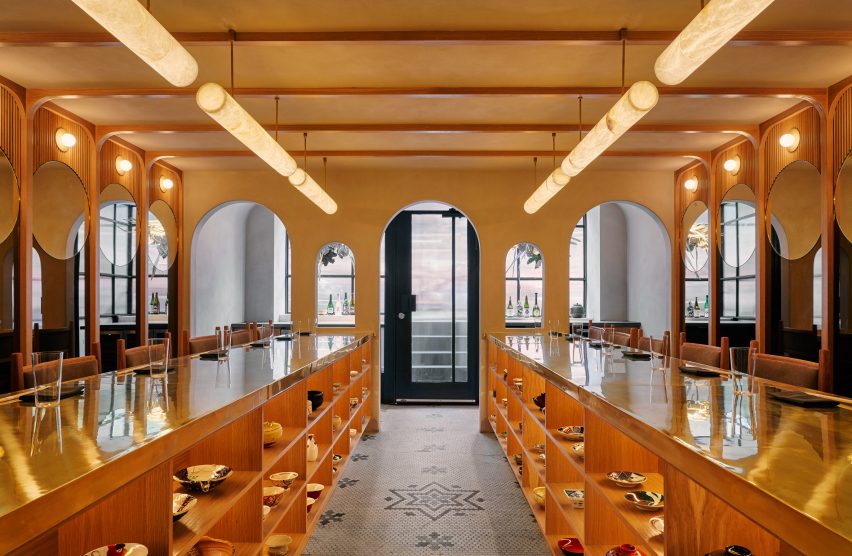
The restaurant’s identify means “moon viewing” – a reference to a fall harvest competition that takes place on the evening of a full moon.
The lunar occasion is commonly celebrated at house with household and mates. Its themes of “contemplation, gratitude and togetherness” supplied the cues for Studio Tack’s design.
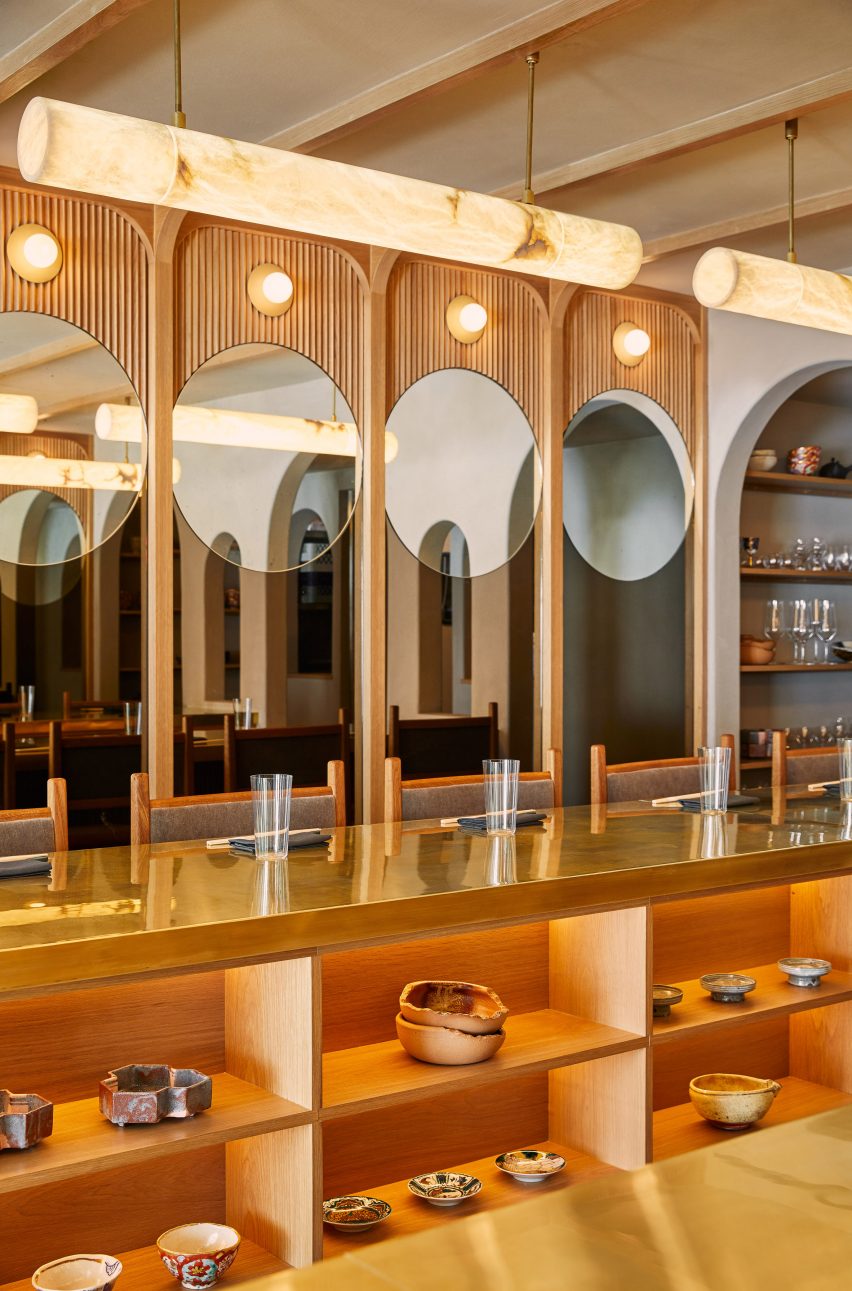
Measuring 660 sq. ft (61 sq. metres), the eatery occupies the bottom degree of a multi-storey, brick constructing in Manhattan’s East Village neighbourhood.
Tsukimi’s chef, Takanori Akiyama, labored in the identical house years in the past, for a restaurant that was shuttered in 2016. The facade is lined with corduroy glass, providing a blurred view of the actions unfolding inside.
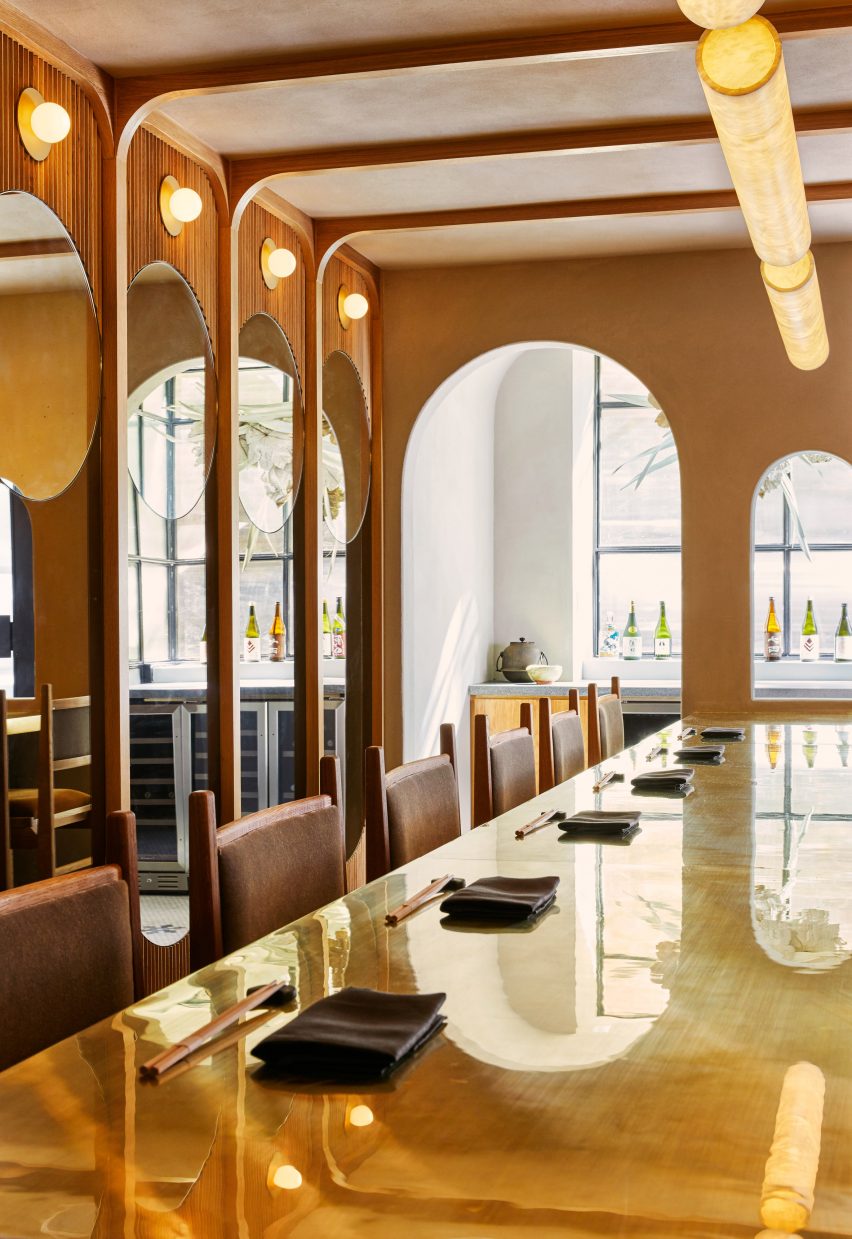
Guests step right into a small entry vestibule with clusters of hanging, dried pampas grass – a standard harvest plant. Arched openings lead right into a slender, linear room stuffed with golden gentle and wood finishes.
The usage of textures and patterns are supposed to evoke the disciplined circulate of kaiseki.
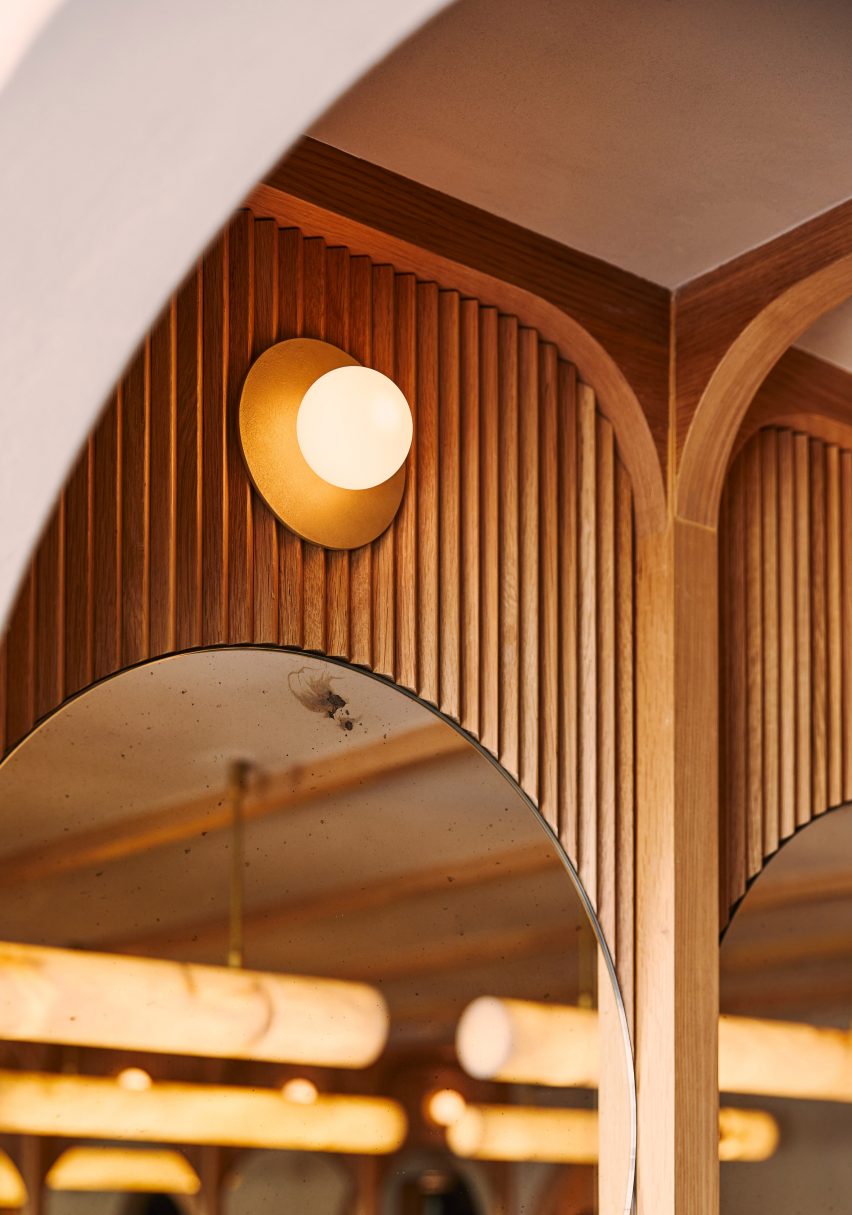
For the partitions, the workforce used hand-rendered plaster and ribbed wood panels. Massive mirrors made from antiqued and bronzed glass assist make the compact house really feel extra expansive.
Basic mosaic flooring courting again to the 1920s was left in place, offering a connection to the constructing’s historical past.
“Although the ground is somewhat worn, and displaying its age, it’s the exact same flooring Chef Akiyama walked on when he labored right here years in the past,” Studio Tack informed Dezeen. “We felt a line of continuity between outdated and new was necessary.”
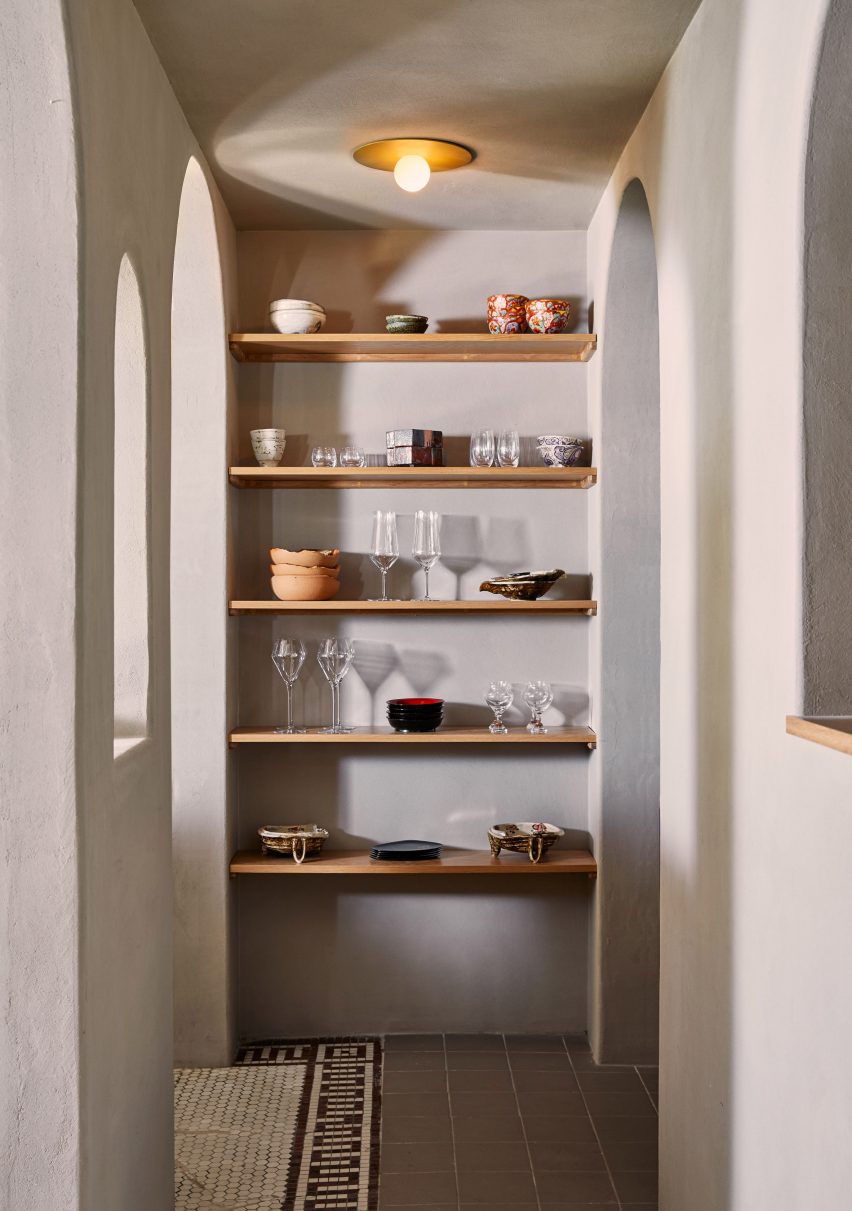
There aren’t any eating tables. As a substitute, visitors sit at one in all two counters within the centre of the restaurant, with a service hall working between them. The white oak counters are topped with unlacquered brass that may develop a patina over time.
Ladderback chairs by Jason Roskey of Fern line the counters. The customized seating is designed to forestall visitors from getting fatigued throughout their 11-course meal.

Rockwell Group fills New York’s Wayan restaurant with wooden and luxurious greenery
“The seat pads and backrest are comprised of the identical type of automotive foam you’d discover in a automotive seat, and upholstered in a Maharam mohair,” the designers mentioned.
Constructed into the counters are niches for fastidiously chosen dishware, which rotates seasonally. The gathering consists of ceramic items by Japanese artist Hitori Wada and Brooklyn-based artist Minami Takahashi, together with particular lacquerware and glassware from Japan.
Classic items collected by the chef and basic supervisor Karen Lin are additionally featured.
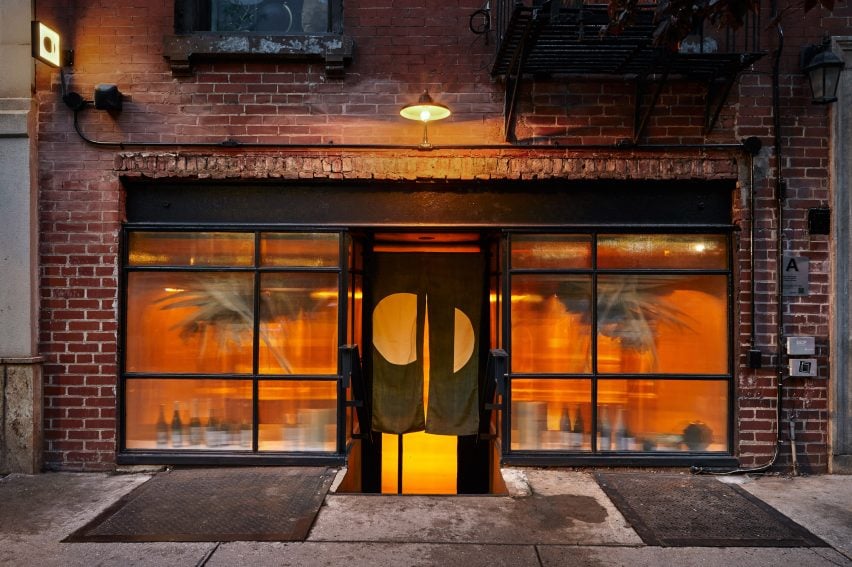
A sequence of tubular lights are suspended overhead. Fabricated from alabaster, the pendants are from Atelier Alain Ellouz in France. The house additionally options brass-and-frosted glass wall sconces from Allied Maker in New York.
“The lighting is designed to be seen in the identical approach the Japanese strategy the moon viewing throughout Tsukimi – that’s, not directly, by taking a look at its reflection in water or its diffusion of sunshine throughout the panorama,” the workforce mentioned.
The lighting contributes to the general ambiance, which is supposed to assist visitors unwind and embrace the kaiseki expertise.
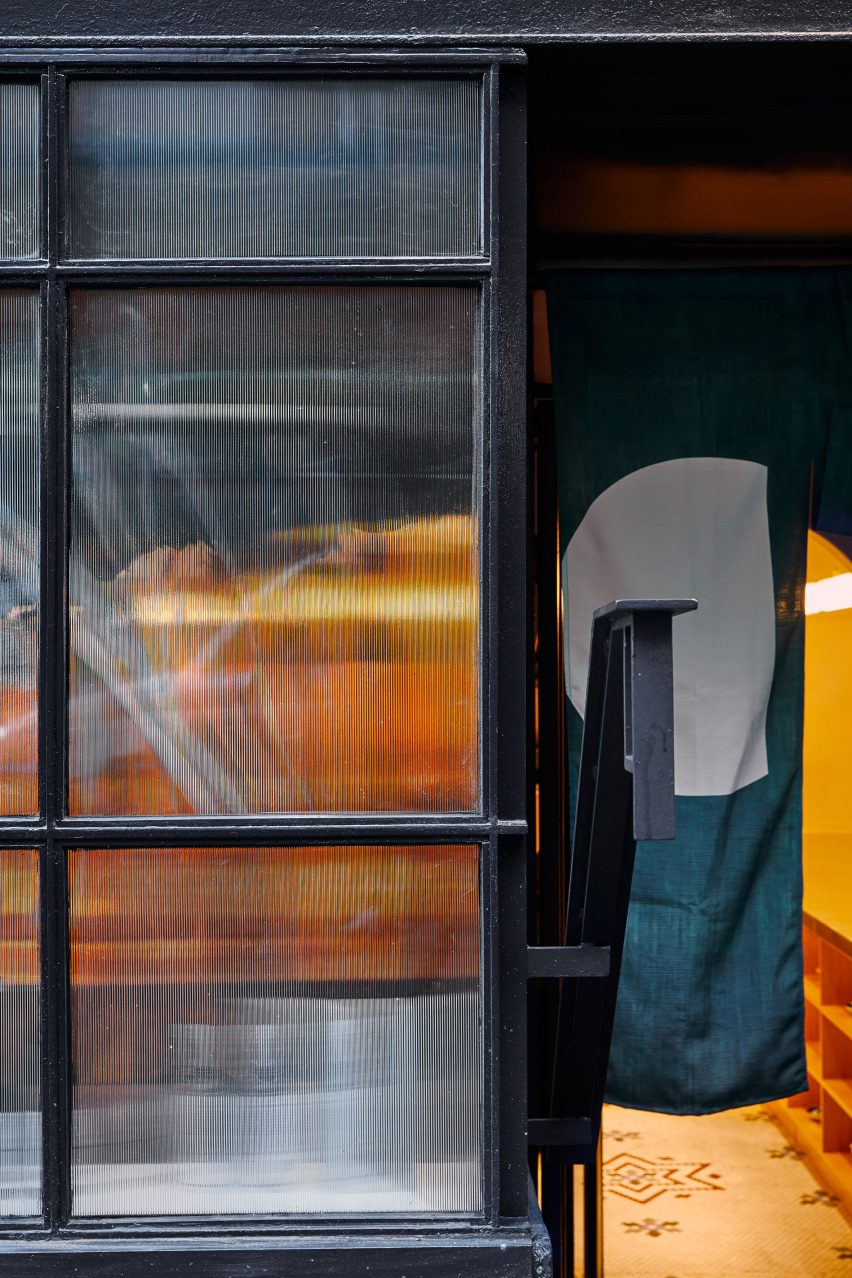
“Whereas the design is definitely impressed by Japanese interiors, it’s reinterpreted right here to keep away from indulging within the cliche,” the workforce mentioned. “The design of Tsukimi aids in slowing the thoughts down, creating an environment that’s elegant and completed, but relaxed and comforting.”
Different New York eating places providing Asian delicacies embody a ramen eatery by Carpenter & Mason that options indigo-coloured finishes and decor, and a Chinese language noodle store by New Observe Studio that has partitions and ceilings wrapped in curved slats of laminated wooden.
Pictures is by Learn McKendree.